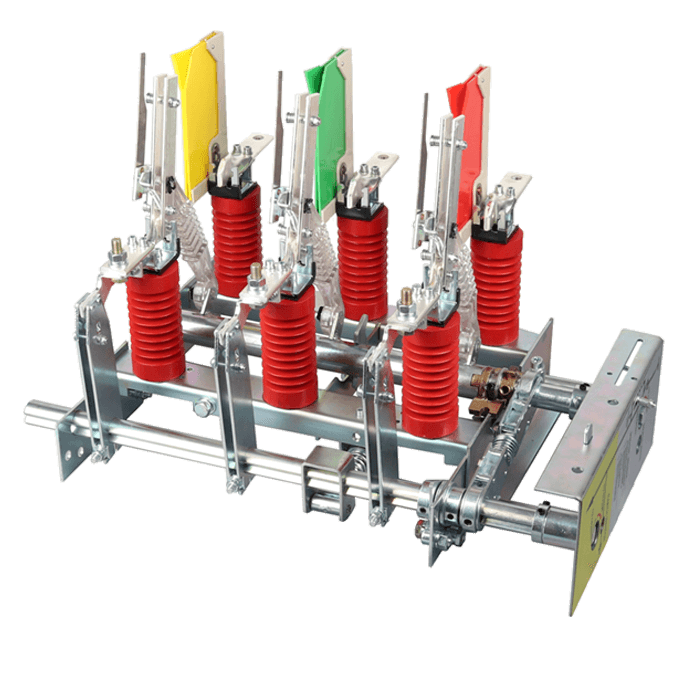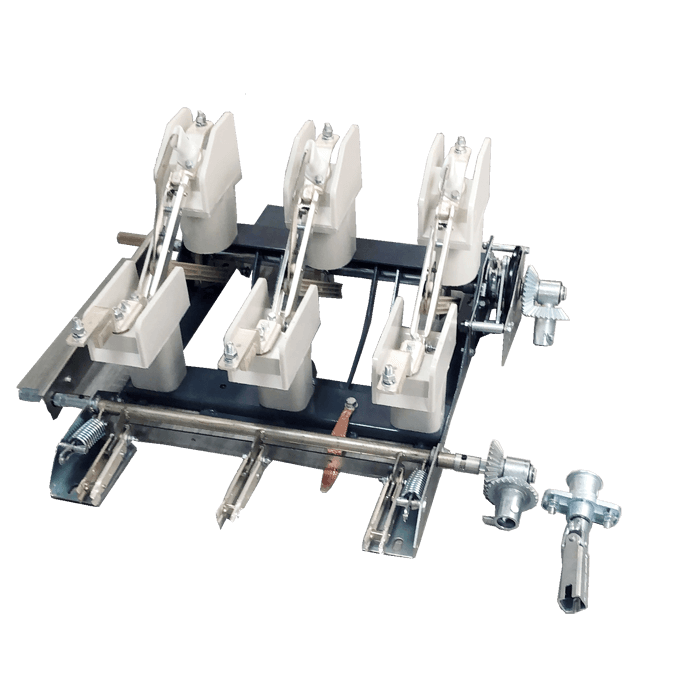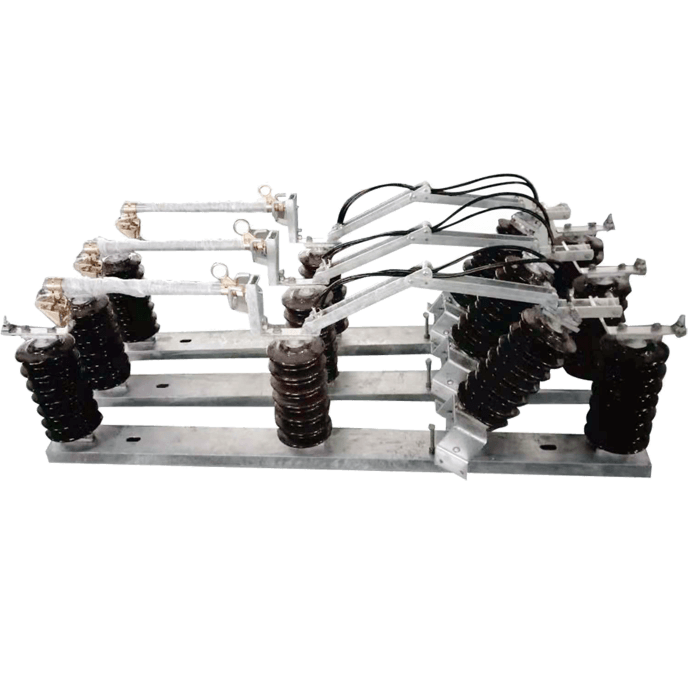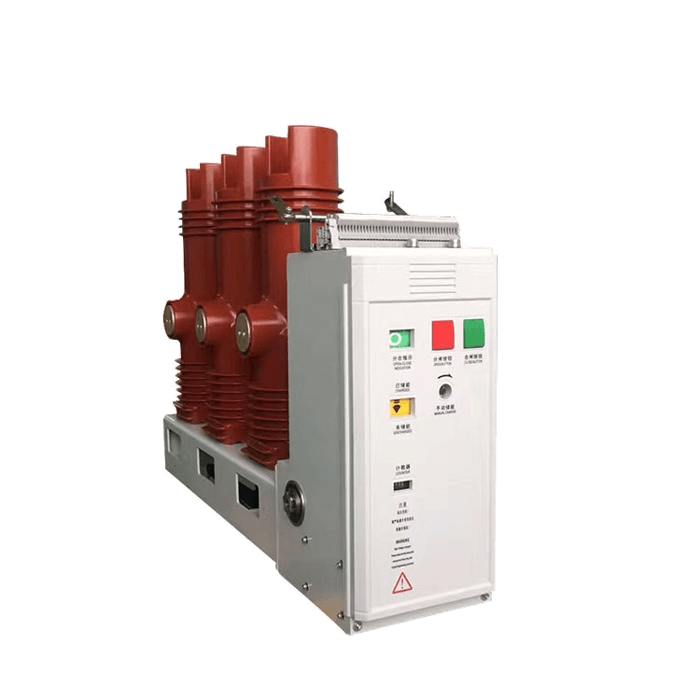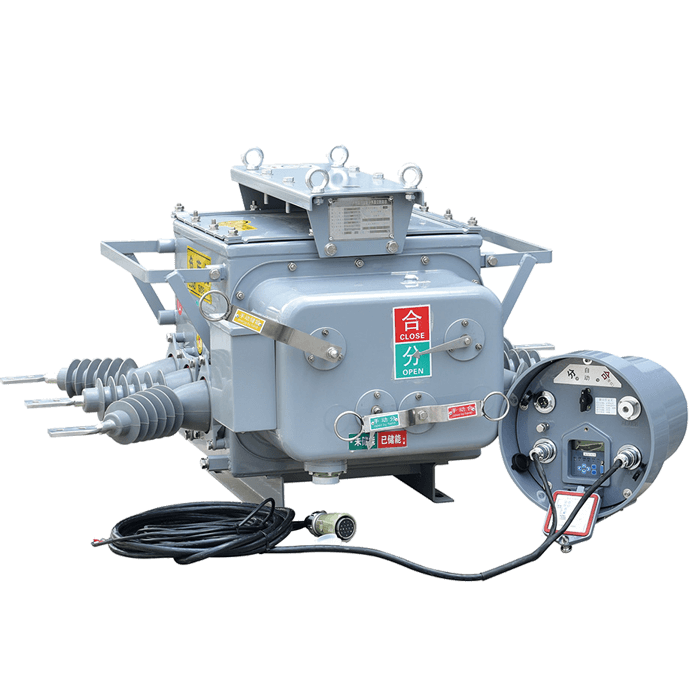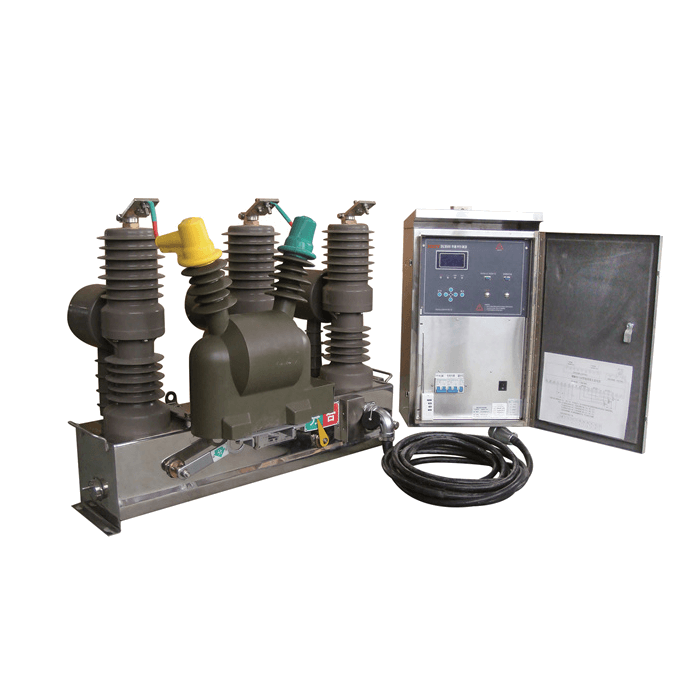How many types of high voltage circuit breakers ?
How many types of high voltage circuit breakers ?
High voltage AC circuit breaker is an automatically operated electrical switch designed to protect a circuit from damage caused by overload or short circuit. Its basic function is to detect fault conditions by interrupting continuity, interrupting the power flow immediately. A circuit breaker is a device that can close or open a circuit manually or remotely under normal conditions, automatically open the circuit under fault conditions, and close manually or remotely under fault conditions.
A typical circuit breaker consists of fixed and moving contacts called poles. Under normal conditions, these contacts remain closed and will not open unless the system fails. When any part of the system fails, the trip coil of the circuit breaker is energized through the relay circuit and the moving contacts are pulled apart by some mechanism, thereby opening the circuit. The circuit breaker contacts must carry the load current without overheating, which must withstand the heat of the arc when the circuit is interrupted (opened). The contacts are made of highly conductive material. The service life of the contacts is limited by the erosion of the contact material by the arc. The arc between the contacts due to the ionization of air or oil vapor acts as a conductor. When a short circuit occurs, a large current flows through the contacts of the circuit breaker before opening. At the moment when the contacts start to separate, the contact area decreases rapidly, and the high current increases the current density, so the temperature rises, and the heat generated in the medium oil or air is sufficient to ionize.
air circuit breaker
Air circuit breakers (ACBs) are the most widely used switchgear. It uses air as the primary dielectric for phase-to-phase and phase-to-phase insulation. The air circuit breaker uses high-voltage blast as the arc extinguishing medium. The contacts open when the air flow valve opens. The blast cools the arc and sweeps the arc products to the atmosphere. This rapidly increases the dielectric strength of the medium between the contacts and prevents re-establishment of arcing.
The reason ACB is so popular is the small space. It has low construction and maintenance costs. The ACB is easy to maintain as all equipment is within sight and failures can be handled without delay. However, because the equipment is susceptible to external factors such as human intrusion, pollution, salt deposits, lightning strikes and extreme weather conditions, it is prone to failure.
oil circuit breaker
Oil Circuit Breaker (OCB) transformer oil is used as an arc extinguishing medium. It insulates between phases and ground, providing a medium for arc extinguishing. When arcing occurs under oil,
The arc vaporizes the oil, creating a large bubble around the arc. The gas inside the bubble is about 80% hydrogen, which weakens the ionization. The oil around the bubbles conducts heat away from the arc, thus also helping to deionize the arc.
Gas Insulated Circuit Breaker
Gas-insulated circuit breakers (GCBs) are essentially compact metal-encapsulated components consisting of high-voltage devices such as circuit breakers and disconnectors. In GCB, all components are placed in modules filled with sulfur hexafluoride or SF6 gas. Current interruption in high-voltage circuit breakers is achieved by separating two contacts in a sulfur hexafluoride (SF6) medium, which has excellent dielectric and arc-extinguishing properties. After the contacts are separated, the current flows through the arc and is interrupted when the arc is cooled by a gas of sufficient strength. Atomic and molecular properties are maintained even at high voltages and have excellent insulating properties. It also reduces the distance required between active and passive circuit breaker components, thereby reducing the size of the device, making it ideal for urban areas and indoor spaces.
Sulfur hexafluoride gas (SF6) is an electronegative gas with a strong tendency to absorb free electrons. The contacts of the circuit breaker are opened in a high pressure flow of sulfur hexafluoride gas and an arc is created between the contacts. The gas captures the conducting free electrons in the arc to form relatively immobile negative ions. This loss of conducting electrons in the arc quickly builds up enough dielectric strength to extinguish the arc.
Over time, gas-insulated circuit breakers have become immune to electromagnetic pollution in the environment due to their small size, high modularity, low safety index, low maintenance requirements, small footprint, and vibration resistance. These factors have significantly increased the deployment of circuit breakers for EHV projects.
The high cost of GCB is a problem, but it becomes economical if the land and construction and maintenance costs are taken into account. Also, as the voltage increases, the ratio of the total investment required for gas-insulated circuit breakers to the total investment required for ordinary circuit breakers decreases. Furthermore, SF6 gas is a greenhouse gas with a high global warming potential. Due to the environmental concerns associated with SF6 gas, efforts are being made to replace it with alternative media. Efforts are also being made to reduce the volume of SF6 gas used per module.
vacuum circuit breaker
Vacuum circuit breakers are mainly suitable for medium voltage applications where arcs are extinguished in a vacuum. In VCB, vacuum is used as arc extinguishing medium with maximum dielectric strength. When the contacts of a circuit breaker are opened in a vacuum, arcing occurs between the contacts. Since the metal vapor, electrons and ions generated during the arcing process rapidly condense on the contact surface of the circuit breaker, the arc is extinguished quickly and thus recovers quickly.
It is also becoming an alternative in high voltage applications due to various advantages such as compact size, higher reliability, less maintenance and faster recovery. Low gap is also a key feature of vacuum circuit breakers due to their high dielectric strength. This switchgear adopts vacuum as the arc extinguishing medium, because the vacuum has the highest dielectric strength, and the arc extinguishing performance of the vacuum switchgear is superior to that of any other medium. So once the arc is created in the vacuum it goes out
in conclusion
Different types of switchgear suitable for smart grid operation need to be developed, which are more compact, more reliable, more environmentally friendly, and require minimal installation and commissioning time.
Therefore, JGGY switchgear manufacturers need to innovate and move more towards smaller but smarter switchgear. Expansion in key industries and infrastructure sectors, as well as increasing emphasis on the development of smart grids and grid automation, are likely to support the circuit breaker market.
Ms Miya: sales@jggyelectrical.com
Whatsapp: +86 181 0679 6660


